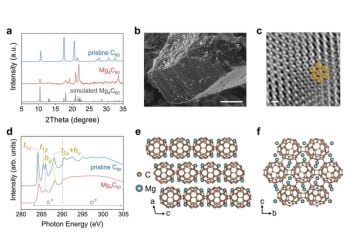- Home
- Science
- Science News
- Greenland's Melting Glaciers Feed Ocean Life, Study Finds
Greenland's Melting Glaciers Feed Ocean Life, Study Finds
Melting glaciers in Greenland are feeding ocean life by dragging deep-sea nutrients to the surface, boosting Arctic phytoplankton and altering ocean carbon dynamics, according to new NASA-led simulations.

Photo Credit: NASA’s Scientific Visualization Studio
NASA finds 57% Arctic phytoplankton surge from nutrient boost
The process of Greenland's ice sheet melting is not only raising sea levels, it is also feeding life in the ocean. As the most productive for marine life, phytoplankton harvesting energy from this nutrient-filled climate change is altering how this biological pump works in these warming ares. In a new study, scientists employed cutting-edge computer models to simulate the intricate movements of ice melt and seawater with ocean currents and marine biology behaviour finnesing adding more detail to an understanding of these unseen forces between Earth's shifting polar zones.
Glacial Melt Fuels a Surge in Ocean Life
According to precious study, each summer Jakobshavn Glacier releases more than 300,000 gallons of freshwater per second into the sea. This less-dense meltwater shoots upward through heavier, salty seawater, dragging deep-sea nutrients—like iron and nitrate—toward the sunlit surface. These nutrients are essential for phytoplankton, which are the foundation of the ocean food chain.
In recent decades, NASA satellite data recorded a 57% surge in Arctic phytoplankton, and scientists now have a clearer picture of why. The nutrient boost is especially crucial in late summer, when spring blooms have already depleted surface waters. Without direct access to such remote regions, researchers had long struggled to test the nutrient-plume hypothesis—until now.
NASA's Digital Ocean Brings Clarity Beneath the Ice
To simulate the chaotic waters of Greenland's fjords, researchers used the ECCO-Darwin model, developed by NASA's Jet Propulsion Laboratory and MIT. Fueled by billions of ocean measurements—temperature, salinity, pressure—this model replicates how biology, chemistry, and physics interact. Using NASA's supercomputers at Ames Research Center, the team calculated a 15–40% increase in phytoplankton growth from glacial nutrients.
Yet more change looms: as melting accelerates, seawater may lose its ability to absorb CO₂ even as plankton pull more of it in. “Like a Swiss Army knife,” said researcher Michael Wood, “this model helps us explore ecosystems far beyond Greenland.”
Get your daily dose of tech news, reviews, and insights, in under 80 characters on Gadgets 360 Turbo. Connect with fellow tech lovers on our Forum. Follow us on X, Facebook, WhatsApp, Threads and Google News for instant updates. Catch all the action on our YouTube channel.
Related Stories
- Samsung Galaxy Unpacked 2025
- ChatGPT
- Redmi Note 14 Pro+
- iPhone 16
- Apple Vision Pro
- Oneplus 12
- OnePlus Nord CE 3 Lite 5G
- iPhone 13
- Xiaomi 14 Pro
- Oppo Find N3
- Tecno Spark Go (2023)
- Realme V30
- Best Phones Under 25000
- Samsung Galaxy S24 Series
- Cryptocurrency
- iQoo 12
- Samsung Galaxy S24 Ultra
- Giottus
- Samsung Galaxy Z Flip 5
- Apple 'Scary Fast'
- Housefull 5
- GoPro Hero 12 Black Review
- Invincible Season 2
- JioGlass
- HD Ready TV
- Laptop Under 50000
- Smartwatch Under 10000
- Latest Mobile Phones
- Compare Phones
- Honor Win RT
- Honor Win
- Xiaomi 17 Ultra Leica Edition
- Xiaomi 17 Ultra
- Huawei Nova 15
- Huawei Nova 15 Pro
- Huawei Nova 15 Ultra
- OnePlus 15R
- Asus ProArt P16
- MacBook Pro 14-inch (M5, 2025)
- OPPO Pad Air 5
- Huawei MatePad 11.5 (2026)
- Xiaomi Watch 5
- Huawei Watch 10th Anniversary Edition
- Acerpure Nitro Z Series 100-inch QLED TV
- Samsung 43 Inch LED Ultra HD (4K) Smart TV (UA43UE81AFULXL)
- Asus ROG Ally
- Nintendo Switch Lite
- Haier 1.6 Ton 5 Star Inverter Split AC (HSU19G-MZAID5BN-INV)
- Haier 1.6 Ton 5 Star Inverter Split AC (HSU19G-MZAIM5BN-INV)
-
 Battery Breakthrough Uses New Carbon Material to Boost Stability and Charging Speeds
Battery Breakthrough Uses New Carbon Material to Boost Stability and Charging Speeds
-
 Ek Deewane Ki Deewaniyat Is Streaming Now: Know Where to Watch the Romance Drama Online
Ek Deewane Ki Deewaniyat Is Streaming Now: Know Where to Watch the Romance Drama Online
-
 Realme Neo 8 Said to Feature Snapdragon 8 Gen 5 Chipset, Could Launch Next Month
Realme Neo 8 Said to Feature Snapdragon 8 Gen 5 Chipset, Could Launch Next Month
-
 Revolver Rita Is Now Streaming Online: Know Where to Watch the Tamil Action Comedy
Revolver Rita Is Now Streaming Online: Know Where to Watch the Tamil Action Comedy










